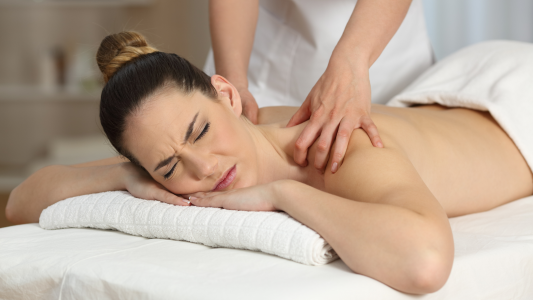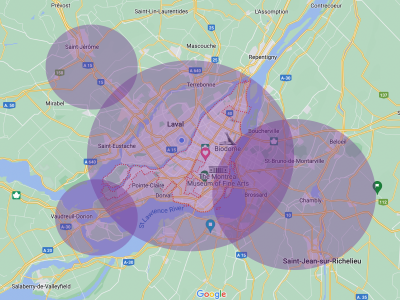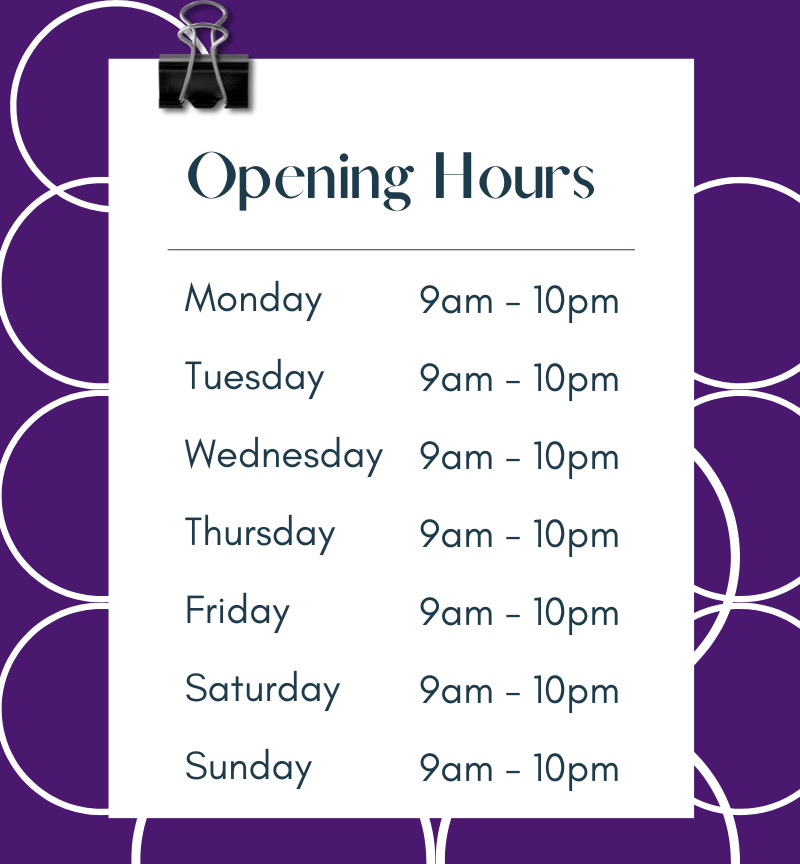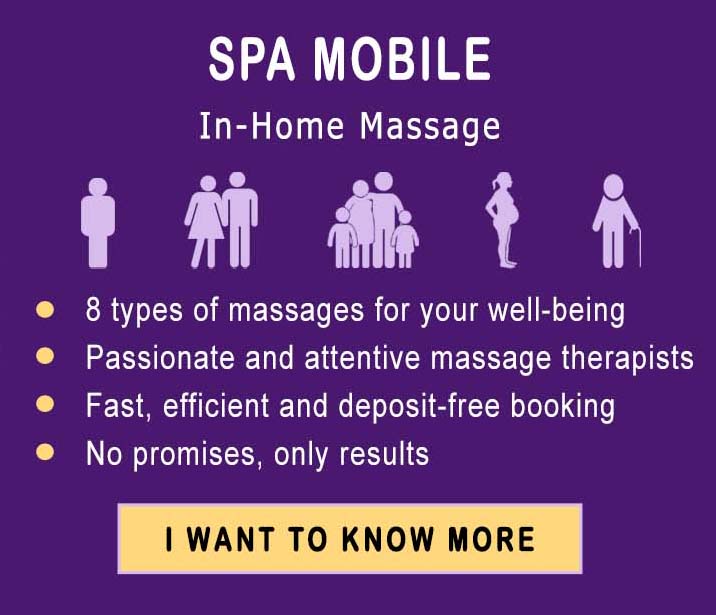Fibromyalgia is a mythical disease. The sufferers of this unique disorder have almost everything working in a regular pattern yet face unexplained muscle pains and stiffness. According to the Centers for Disease Control and Prevention, it affects 4 million people in the US (2% of adults)
Signs And Symptoms of Fibromyalgia
The disease is characterized by pain occurring in different parts of the body. The widespread ache and stiffness are accompanied by other symptoms, including:
Pain
This debilitating disease causes moderate to severe musculoskeletal pain. It affects the hard tissues (bones, joints) and the soft tissues (muscles, cartilage). The pain is widespread and usually involves more than one region simultaneously.
The presence of widespread pain is considered a diagnostic criterion for the disease. The muscles become sore and painful, significantly reducing life quality.
There are specific trigger points identified that can lead to a flare-up of pain in fibromyalgia patients. These include:
- The backside of your head
- The upper region of the chest
- Hips and knees
- Top of shoulders and outer side of elbows

The most common sites of fibromyalgia are:
- Sharp, stabbing pain in the chest
- Chronic low back pain
- Leg pain (throbbing or burning pain)
Fatigue
Fibromyalgia patients often complain of fatigue. The disease was found to be linked to chronic fatigue syndrome. According to a study, patients who have fibromyalgia experienced chronic fatigue.
Another study found that fibromyalgia patients showed cognitive impairments similar to patients with chronic fatigue syndrome. It was also concluded from the survey that fibromyalgia leads to increased susceptibility to distraction and impaired concentration. Fatigue due to the disorder adds fuel to the fire.
Inability to sleep
A good night’s sleep is necessary for a healthy mind and body. Fibromyalgia patients not only suffer from episodes of severe pain and fatigue but also have a hard time sleeping. Sleep disorders are associated with fibromyalgia.
According to a meta-analysis, FM patients experience poor sleep quality, shorter sleep duration, and lesser sleep efficiency.
It was found in a 2020 study that the extent of the disease was directly linked to sleep disturbances. The more the symptoms, the greater the sleep disorder. This is why research now suggests that fibromyalgia pain be treated with improvements in sleep.
Depression And Mood Disturbances
Depression is an unlikely outcome of fibromyalgia. It was found in a 2019 report that fibromyalgia patients present high levels of depression and increased cognitive rigidity. This is why such patients also experience mood swings and irritability.
Numerous studies investigated the psychological impacts of the aching disease. Fibromyalgia syndrome is linked to fatigue, insomnia, depression, cognitive impairment, etc.
Most people experience a fuzzy feeling, i.e., an inability to concentrate and retain memories. A study found that people experience their brains as filled with fog, which is known as “fibro fog.”
Associations With Other Disorders
Fibromyalgia may coexist with the following disorders:
- Migraine
- Interstitial cysts
- Painful bladder syndrome
- Temporomandibular joint disorders
- Chronic fatigue syndrome
Causes And Risk Factors Of Fibromyalgia
There are no known causes of fibromyalgia. However, researchers have identified some risk factors that may trigger the disease. It is believed that there is a genetic predisposition towards the disease, and a trigger may turn the button on. The recognized risk factors are:
- Infection: Gastrointestinal tract infections, flu, and pneumonia may act as risk factors.
- Stress: Stress is frequently found to be linked to FMS. It is believed that long-standing stress can trigger fibromyalgia.
- Trauma: Both emotional and physical trauma are considered risk factors.
Treatment Options
The bitter truth is that there is no definitive cure for this chronic, mysterious disease. All you can do is symptomatically manage the disorder and improve your quality of life.
Massage For Fibromyalgia: The Ray Of Hope
The best way to flush out chronic pain from your body is to get a good massage (from a professional massage therapist). Kneading and rubbing muscles/joints are the ideal ways of increasing your range of motion and reducing the associated pain.

According to a 2018 study, massage therapy improves quality of life and reduces stress in fibromyalgia patients.
A meta-analysis concluded that massage therapy for a duration greater than five weeks provided an immediate positive effect on anxiety, pain, and depression in patients with fibromyalgia.
You might be wondering how massage works for fibromyalgia. Studies have proved that many patients (66% of members) used alternative and complementary treatments. These modes of treatment improved the quality of life and reduced pain.
Different types of massage can be highly beneficial to you. The best types of massage for fibromyalgia and how they improve fibromyalgia symptoms are given below:
Myofascial Release
This particular type of massage for fibromyalgia aids in removing pain by relaxing the contracted muscles and improving the blood flow of the region. According to a 2020 review, myofascial massage therapy is effective in providing relief to fibromyalgia patients.
A study suggests that the therapy only reduces pain in patients and can, therefore, be used as a complementary therapy.
Per a pilot study, Myofascial release therapy dramatically reduces peck and upper back pain. The treatment is superior to Swedish massage.
Self-massage can also bring relief. A randomized controlled trial noted that a self-myofascial release program can significantly improve quality of life.
Connective Tissue Massage
This massage uses more pressure to release the deeper layers of muscle and connective tissue (fascia). The therapist applies slower strokes but with great pressure.
In a randomized controlled trial, connective tissue massage therapy done with exercise was considered superior to just exercise. It resulted in more significant improvements in pain, fatigue, and sleep issues.
Your doctor may recommend exercise for pain relief. A professional masseuse’s touch can greatly increase the efficiency of your efforts. Thus, when you go for a walk, don’t forget to call your massage therapist for a pain-relieving connective tissue massage.
This specific massage will also reduce your dependence on analgesics (painkiller medicines). According to a study, connective tissue massage significantly reduces pain and improves the depainkillertate of fibromyalgia patients. Manual therapy also shows a positive impact on the patients’ spinal mobility.
Trigger Point Therapy
In this massage therapy procedure, the professional therapist applies pressure on the identified trigger points, using finger pressure to soothe the pain initiated from these points.
These points are located on bands of muscle fibre that are sensitive and painful to touch. According to a study, fibromyalgia symptoms can be reduced if these trigger points are desensitized to become extinct. An effective way of doing this is by performing trigger point massage therapy.
Your massage therapist will deactivate these points by applying pressure from his fingers. Chronic low back pain is frequently associated with FMS. A study suggests that trigger point therapy improves low back pain. Myofascial trigger point therapy also provides relief in upper shoulder and chest pain, etc.
Manual Therapy
Massage therapy is recognized as a potent way of reducing muscle tension. According to a study, physical therapy can improve quality of life. It can be combined with different treatment modalities, such as acupuncture, to provide pain relief.
Massage therapists can play a vital role in educating fibromyalgia patients. A study suggests that therapists provide manual therapy to patients because it is very effective. In addition to the treatment, professional therapists must address the inappropriate pain beliefs of the patient and recommend exercise interventions.
A study suggests that this therapy also helps patients carry out muscle conditioning, which prevents the detrimental effects of a sedentary life.
As per a 2020 study, the application of manual therapy on fibromyalgia women leads to an evident reduction in pain perception and muscle fatigue, along with improvements in anxiety disorder.
Another 2020 study concluded the ideal duration of manual therapy for achieving the best results. The study suggests 11 hours and 15 minutes of manual therapy for fibromyalgia patients. Patients should consider getting a 45-minute massage three to five times a week, and this should continue for three to five weeks.
Shiatsu
This type of massage is part of Japanese healing treatment. The therapist applies subtle pressure on specific points of the body to relieve tension and, thus, remove associated pain.
A study revealed that shiatsu massage leads to a 40.6% improvement in pressure pain threshold and a 34.4% improvement in sleep quality. Therefore, it has the potential to be used as an alternative therapy for the management of fibromyalgia. As per a meta-analysis, shiatsu massage provides long-term relief from symptoms.
Manual Lymphatic Drainage
This technique involves lightly stretching and massaging the skin to promote the movement of lymph fluid. This is often a part of decongestion therapy or Complete Decongestive Therapy (CDT).
Connective (CT) massage is a famous and commonly used massage therapy for fibromyalgia patients. However, manual lymphatic drainage massage surpasses CT massage in efficacy. According to a randomized controlled trial, manual lymphatic drainage performed better in reducing anxiety and tiredness (in women with FMS) as compared to connective tissue massage.
Another 2020 systematic review approved the usage of manual lymph drainage therapy to manage fibromyalgia symptoms.
How Does Massage Benefit Fibromyalgia Patients?
A systematic review identified the different types of massages and their particular benefits for fibromyalgia patients. It included ten randomized and non-randomized controlled trials. The review found that myofascial massage reduced pain and stiffness, connective tissue massage alleviated depression and improved quality of life, shiatsu improved pain threshold and sleep, and manual lymph drainage had similar effects to connective tissue massage (but superior).

We have discussed the impact of the different types of massages, but how do they help improve the symptoms physiologically?
Massage Decreases Stress
Stress is a relatively common feature of fibromyalgia. As per a pilot study done in 2018, hand massage reduces anxiety and alleviates agitation in hospitalized patients. This is the result of a reduction in stress hormones caused by massage.
If you are experiencing stress due to your fibromyalgia, call your massage therapist. The procedure also helps you relax the body and attain a good mood.
Reduces Pain And Fatigue
Massage increases the body’s circulation, which lets the systems flush out toxins. Reducing the toxins leads to a reduction in fatigue and pain.
Helps You Sleep Better
The kneading, stretching, and pressure applied during a massage relieve pain from the body. A reduction in stress and pain lets you sleep better.
Other Treatment Options For Fibromyalgia
In addition to massage therapy for fibromyalgia, you can also take advantage of other treatment modalities.
Medications
You can take help from medicines to relieve pain and improve sleep quality. The commonly used drugs include:
- Pain-killers
- Antidepressants
- Anti-seizure drugs
Natural Remedies
Adopting certain natural remedies can help you slow down the expression of thePainkillerske the following activities/therapies a part of your routine to get relief from symptoms:
- Exercise
- Meditation
- Tai chi/yoga
- Acupuncture therapy
- Balanced diet
Conclusion
Fibromyalgia is a musculoskeletal disorder in which the patient experiences unexplained pain in the bones and the muscles. The disease occurs frequently, but it is still difficult to diagnose. The disordeprimarymain symptoms include muscle, joint, and bone —stiffnessness of the joints with reduced range of mobility. Fatigue, anxiety, and depression (cognitive impairments) are almost always present in patients with fibromyalgia.
There is no known cure for the disease. Therefore, the majority of the patients rely on complementary treatment modalities. The best way to treat this debilitating disease is by getting a massage. Different types of massage are effective for fibromyalgia patients.
The most prominent techniques include myofascial release massage, connective tissue massage, shiatsu massage, trigger point massage, manual therapy, and lymphatic drainage massage.
Massage therapy improves blood flow to the region and reduces stress hormones. This has the ultimate beneficial effect of reducing pain and improving sleep in fibromyalgia patients.





